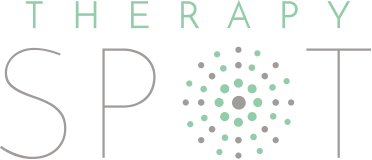As a working parent, I know how difficult it can be to dedicate a lot of time to your toddlers’ language development. Don’t fret! Your child will communicate as long as you comment on what they are doing. Remember – Do not question or test them (e.g., “what is this”, “what is that”). Instead, just comment on what they are doing!
1. Morning Routine
- Getting dressed: Help your child to get dressed by giving them clothing choices. This will help them learn the clothing items name, colour etc. For example, “would you like to wear blue socks or red socks?”, “Do you want to wear sweat pants or jeans.” This gives the child a feeling of control as they are making choices. However, it also teaches them all their clothing vocabulary, colours etc. Try to use body part vocabulary as well. “socks on feet”, “Arms through sleeves” etc.
- Brushing teeth: Talk to your child about having “clean” teeth. You can point to one of their teeth and say “oops, dirty tooth, let’s clean it slowly” and then take the toothbrush and clean off the dirt saying “lets brush your teeth and make them shiny and clean”. You are teaching them adjectives, nouns, verbs and adverbs.
- Eating Breakfast: Commenting as much as possible on what and how your child is eating during breakfast will build their language. Don’t ask them to name items, as they will feel tested. Instead, just comment on what they are doing. Vocabulary options include: Verbs such as: Sit, bite, eat, chew, swallow, drink; Nouns such as: chair, plate, bowl, cup, spoon, fork, eggs, bacon, toast, cereal, apple, banana, yogurt; Adjectives such as: yellow (banana), red (apple), white (yogurt); Adverbs related to chewing: Loudly, quietly, slowly, quickly; and phrases such as: “put in mouth”, “chew with teeth”, “sit on chair”, “you are sitting quietly, great sitting”, “you are chewing slowly, great chewing”.
2. Grocery Shopping
- Driving the car to the grocery store and you pull up to a light. There is a small red truck next to them or a big yellow crane. Perhaps your child is looking outside at these objects. Try to add words to what they are seeing. If you do, you have just taught them the category of vehicles and reinforced colours. You can also speak about the speed at which a vehicle is travelling (fast, slow,) or the conditions on the road (icy, bumpy, windy, smooth).
- When you get to the grocery store, you might put them in the cart. You can talk about them sitting in the cart, holding on tight, moving slowly, turning right or left. You can use phrases when collecting the items, such as: “reach up high”, “at the bottom” etc. Of course, there are all the nouns at the grocery store broken up into different categories: Vegetables (asparagus, broccoli, cabbage etc); Fruit (apple, banana, plum, mango); Dairy (eggs, cheese, yogurt, milk); Meat (fish, chicken, beef, lamb, pork); Breakfast foods (bread, cereal,) etc/
3. Bath-time
- Bath-time routine is filled with so many language building options. You can talk about washing the different body parts. You can “pop bubbles”. You can talk about the toys they are playing with or describe the pictures your child is looking at in a waterproof book. When playing with toys, say its name (e.g., truck, crane, boat, sailboat, baby, ball, duck, frog, dinosaur etc), its colour (e.g., red truck, yellow crane etc). Make sure to let your child lead the activity. Let them decide what toy they would like to use and then use language to describe or comment on how they choose to play with the toy (e.g., “The green frog is jumping in the water,” “He is jumping high, he is jumping low, he is jumping slowly, he is jumping quickly, he made a big splash, he made a little splash”). Repetition of words is very helpful.
Remember – Do Not Question, as They Will Feel Tested! This Will Create Anxiety and They Will Not Learn As Quickly. Instead, Just Comment On What Your Child Is Doing Using Different Types Of Vocabulary (Nouns, Verbs, Adjectives, Adverbs)!


